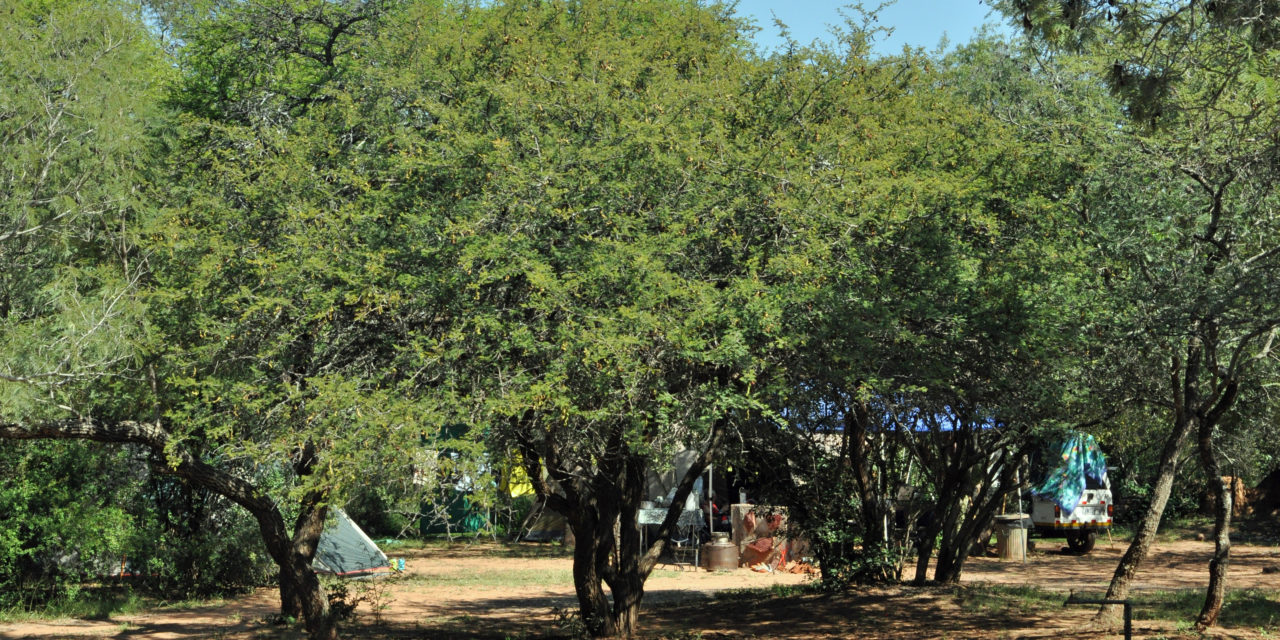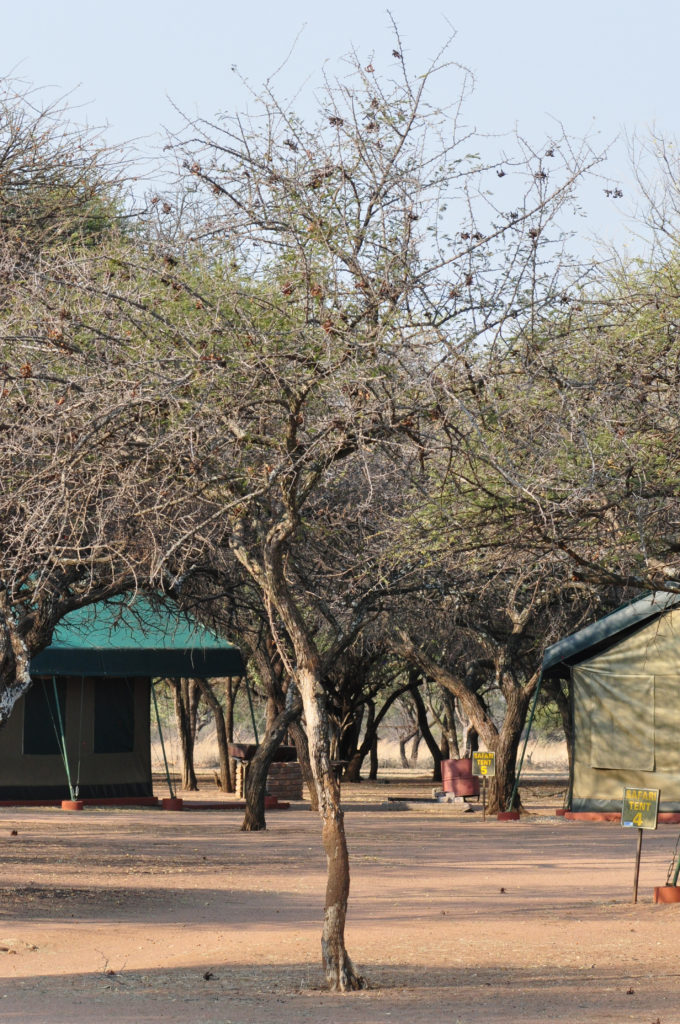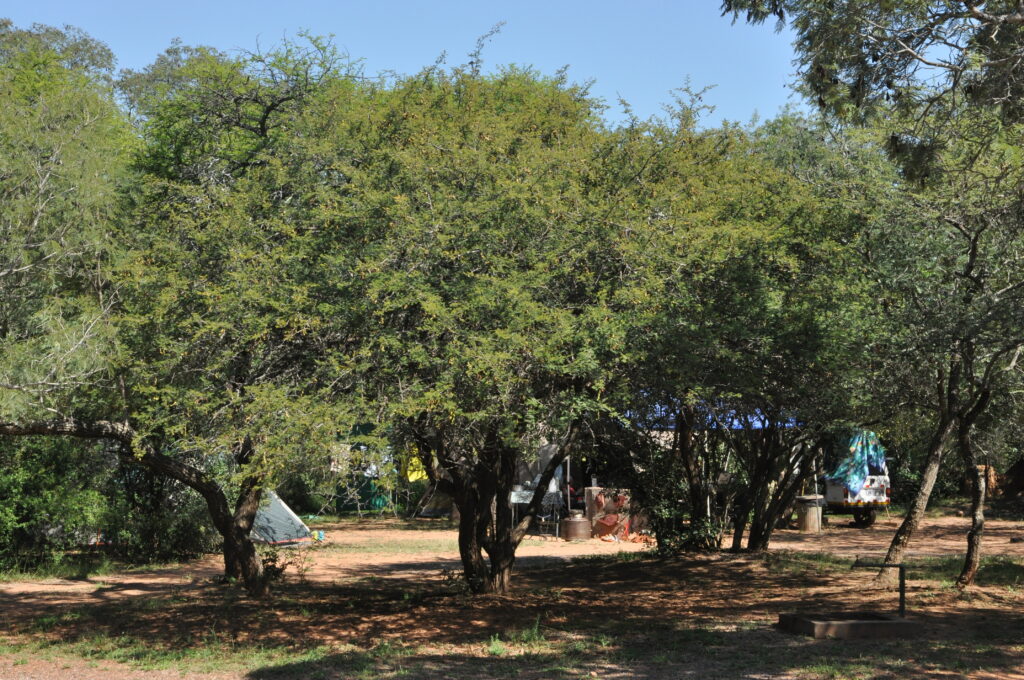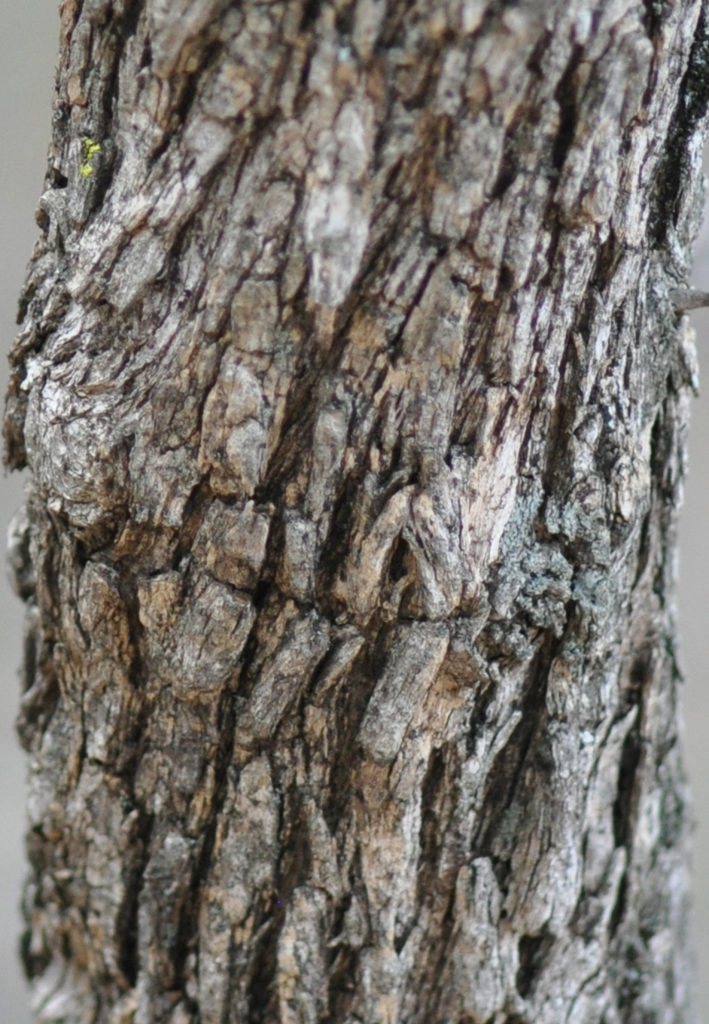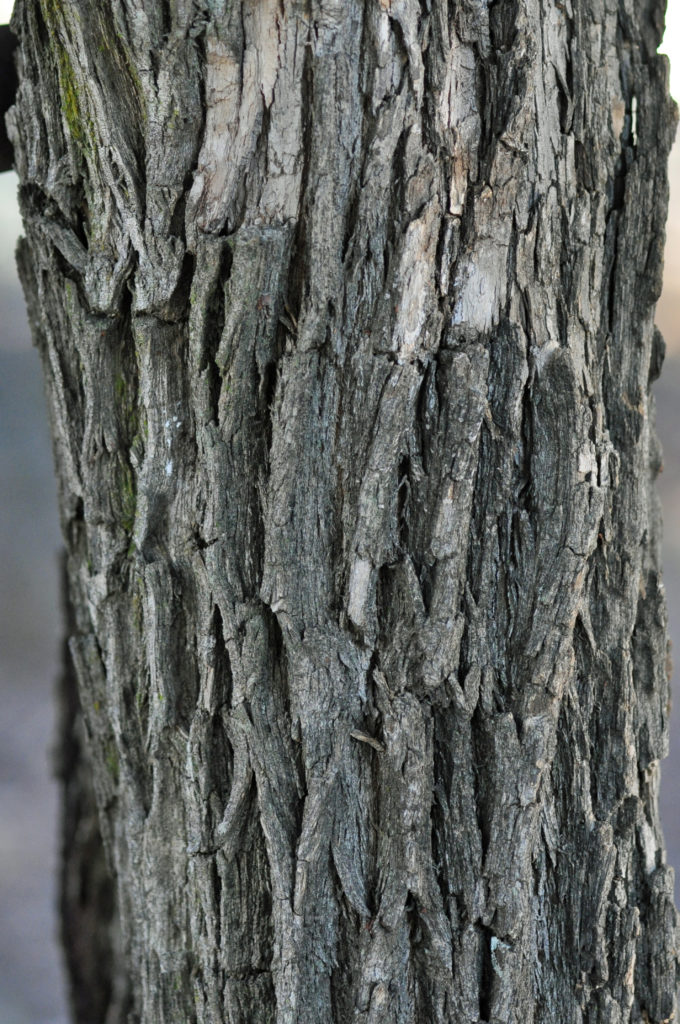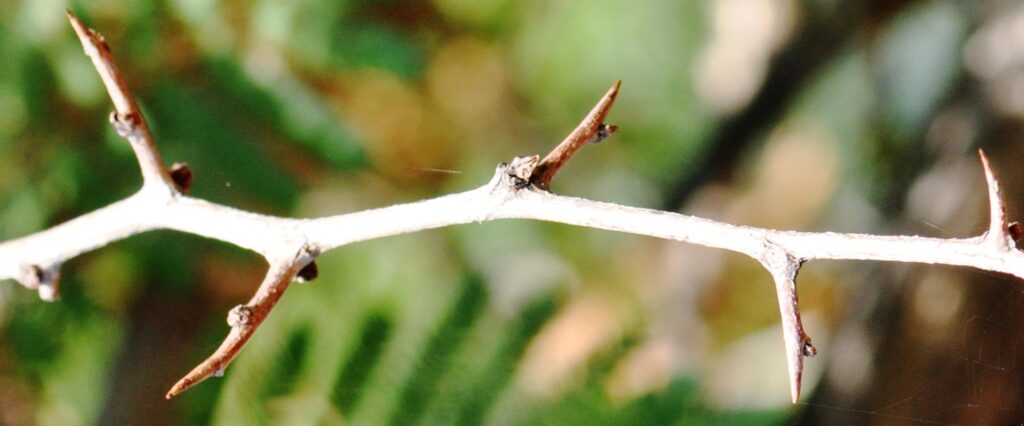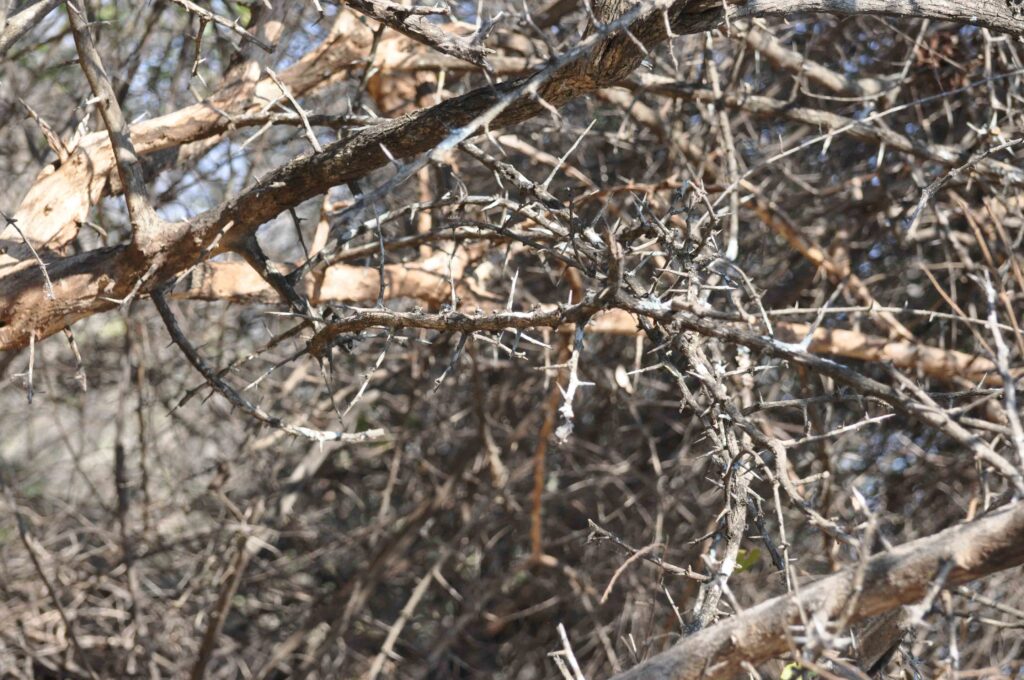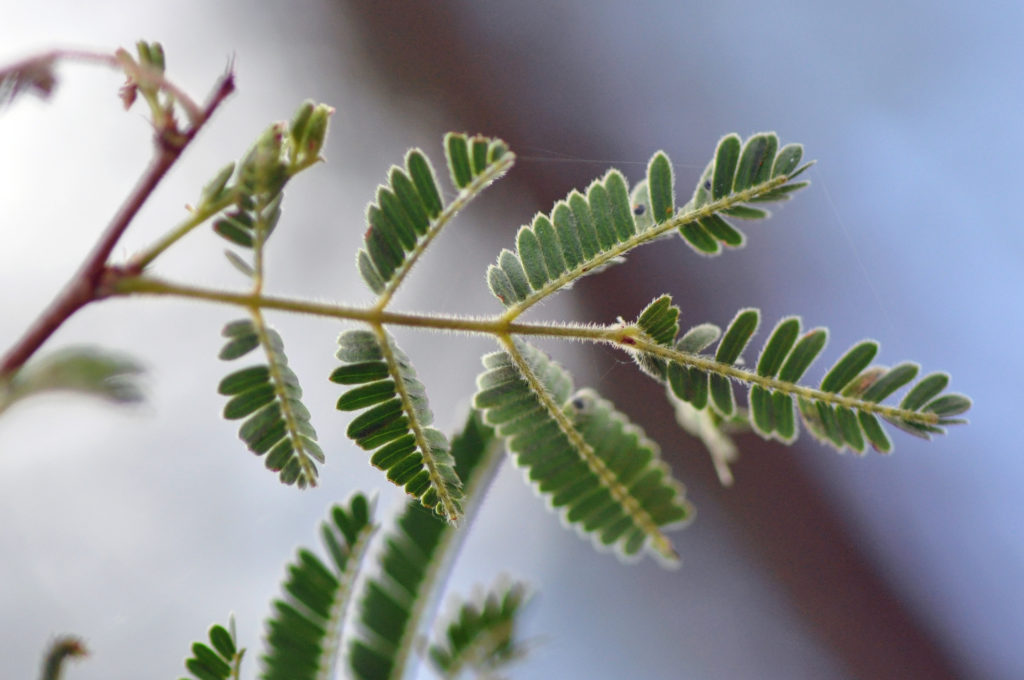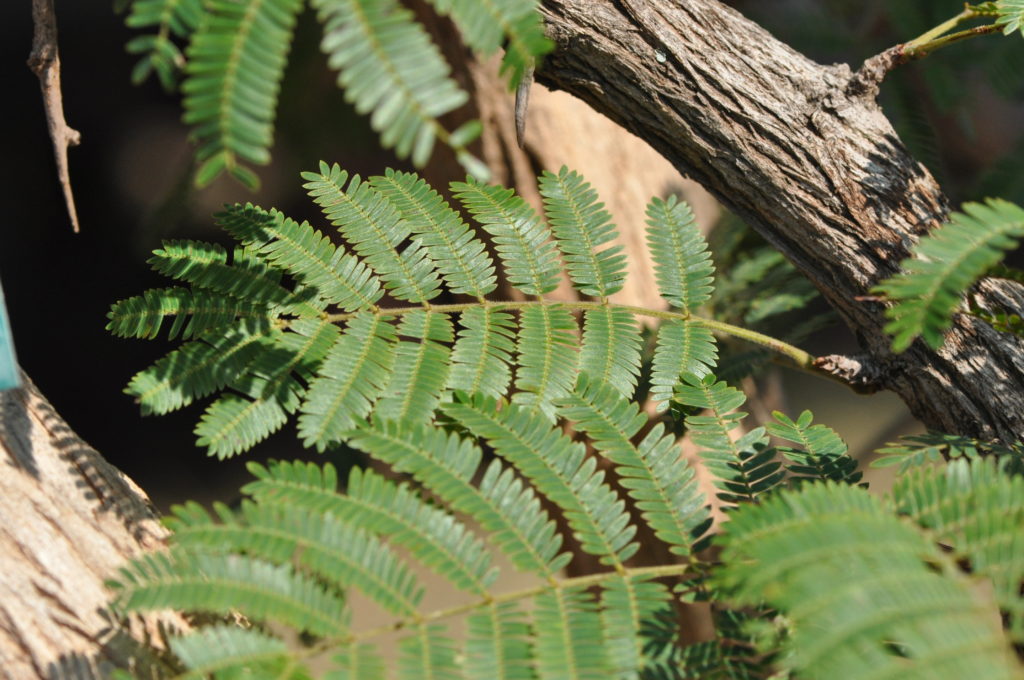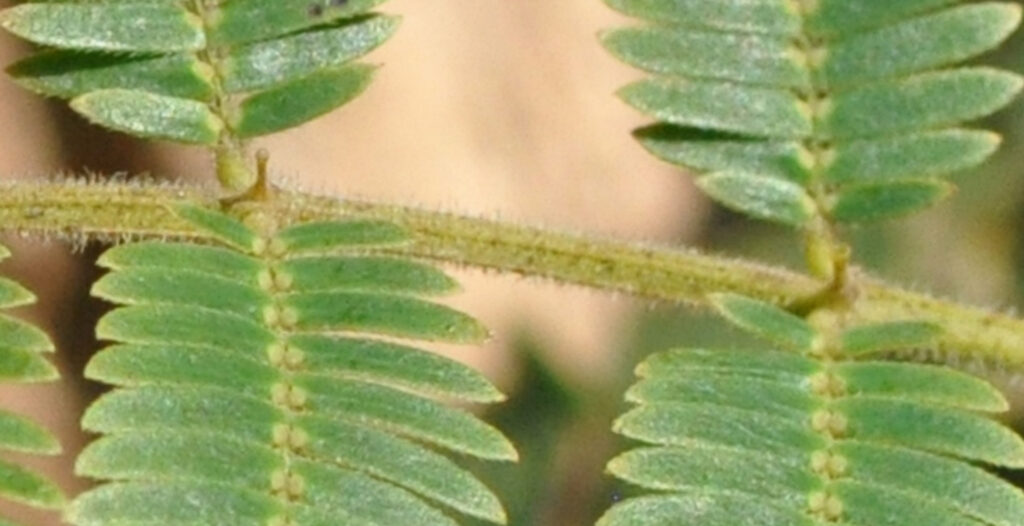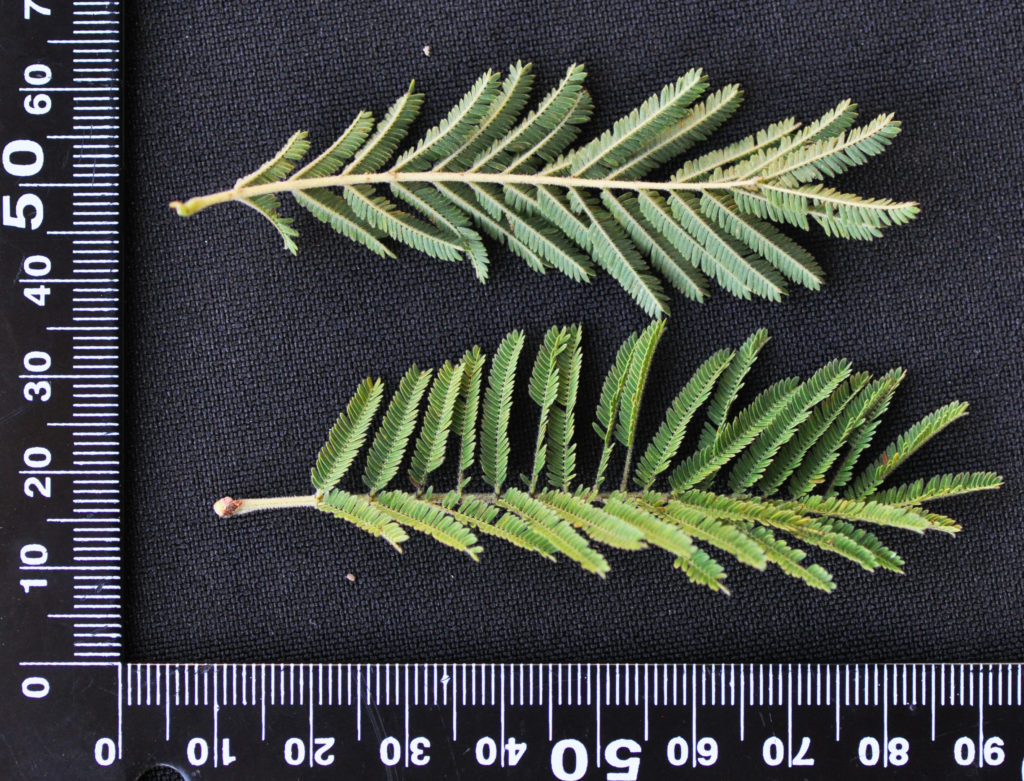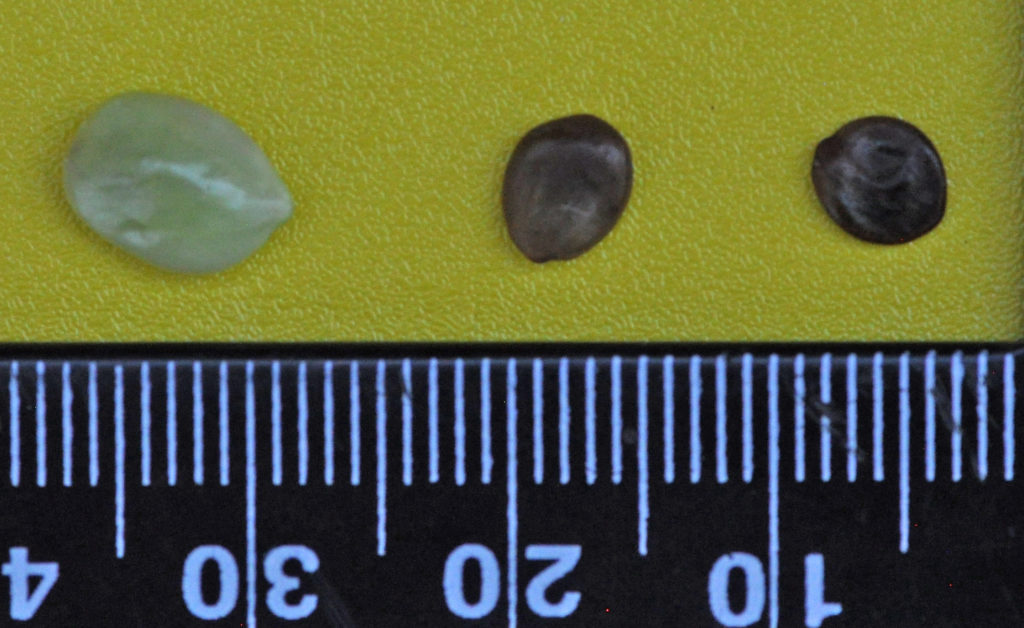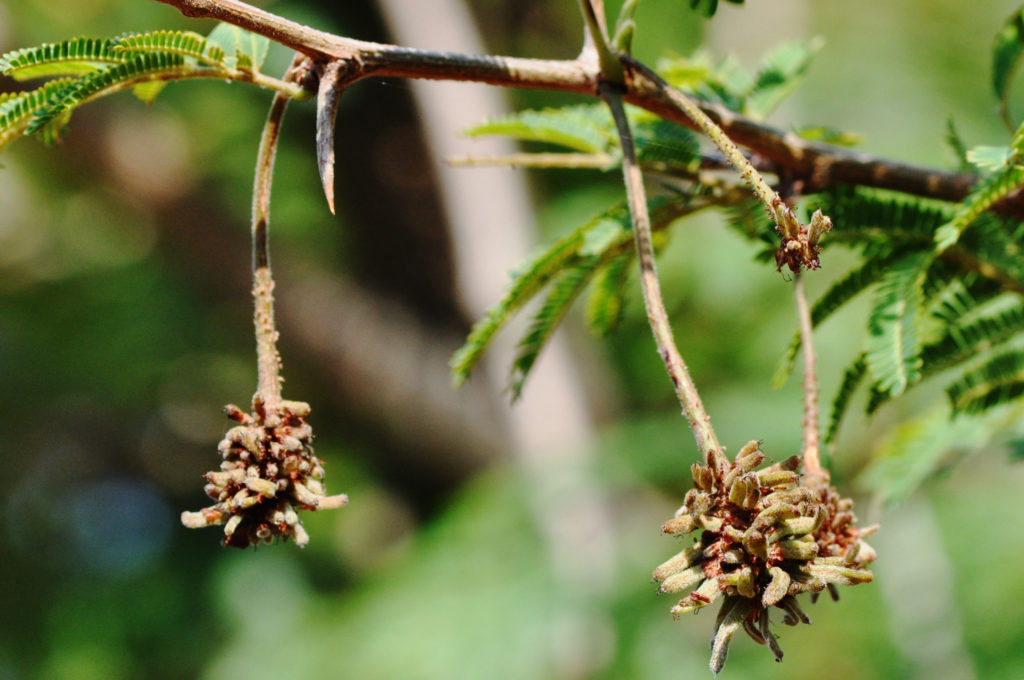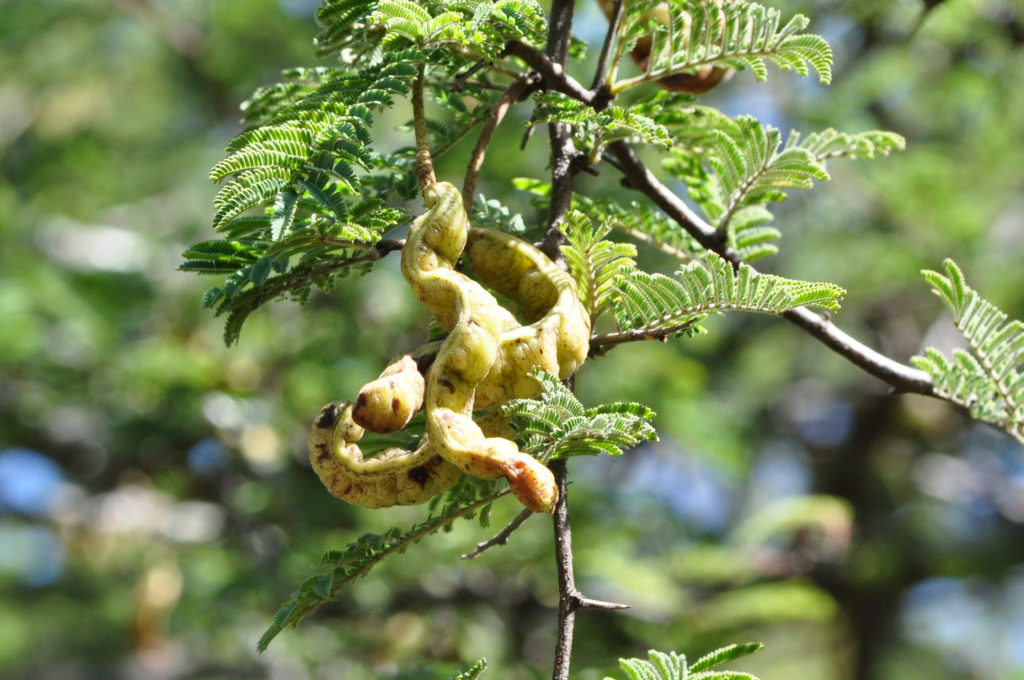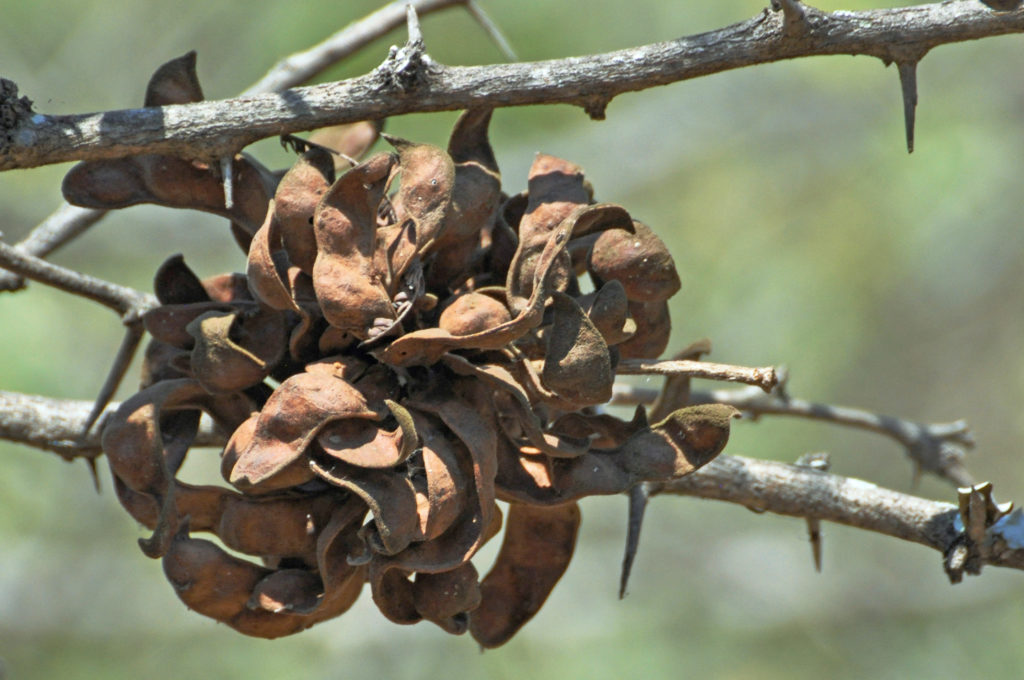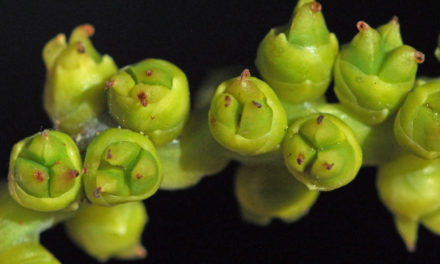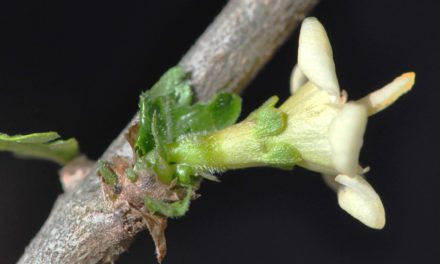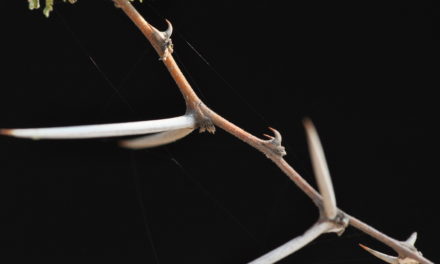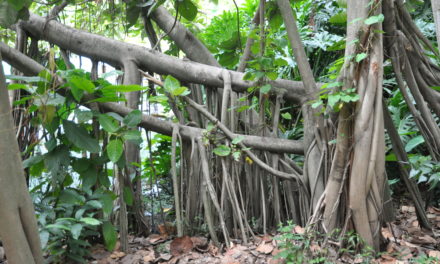Dichrostachys cinerea subsp. africana
General Info – summary
This small, rounded Tree is up to 7m high, with single spines originating from hardened branches. The deeply fissured bark is dark grey. Leaves are bipinnate and glands may appear on the rachis but not on the petiole. Different coloured, bisexual, regular, 5-merous Flowers are in spikes but the basal flowers are sterile. The curled, twisted, sickle-shaped and coriaceous Fruit is an indehiscent, pod with black seeds.
Description
Previous Names: Acacia engleri, Acacia spinose, Cailliea dichrostachys, Desmanthus leptostachys, Desmanthus nutans, Desmanthus trichostachys, Dichrostachys caffra, Dichrostachys lugardiae, Dichrostachys nutans.
SA Tree No. 190
Common names: (Afr) Kleinblaar-sekelbos, Koedoepeul, Sekelbos, Soetpeul. (Eng) Bastard Acacia, Chinese Lantern, Chinese Lantern Tree, Chinese Lanterns, Kalahari Christmas Tree, Sickle Bush, Small-leaved Sickle-Bush. (IsiNdebele) BIgaku. (isiZulu) Ugagake, Ugagane, Umnukelambiba, Umthezane, Umzilazembe. (Northern Sotho) Lereche, Morêtsê. (Setswana) Keye, Mosêlêsêlê. (siSwati) Lusekwane, Umsilazembe. (Tshivenda) Murenzhe, Muunga.
Family: Fabaceae or Leguminosae. (Pea, bean or legume family). After the Orchidaceae and the Asteraceae, the Fabaceae is the third largest Angiosperm (flowering plants) family with 700+ genera and close to 20 000 species. Local Tree genera on this website include Acacia (Vauchellia, Senegalia), Albizia, Bauhinia, Bolusanthus, Burkea, Calpurnia, Colophospermum, Cordyla, Cyclopia, Dichrostachys, Erythrina, Erythrophleum, Faidherbia, Indigofera, Mundulea, Peltophorum, Philenoptera, Piliostigma, Schotia and Xanthocercis. The Fabaceae are recognisable by their fruit and by their pinnately compound Leaves. Leaves may also be simple – even bilobed and usually have stipules – some of which may be spinescent. Leaflets are usually entire. Flowers are bisexual and bracteate. Regular flowers usually have 4-5 sepals and the same number of petals. Irregular flowers have 4-5 sepals and 5 or less petals. Stamens have anthers that have 2 pollen sacs and there are usually at least twice the number of stamens as petals – often 10. The superior Ovary has one locule that may contain 1 or more ovules. The Stigma and Style are simple. The single carpel develops into the Fruit, which is usually a pod. The fallen pods may break into segments. Seeds vary.
Name derivation: Dichrostachys: Greek: the referring to the 2 coloured flower spike. cinerea – ashy or grey haired. This is not true of the sub-species that occurs in South Africa. Dichrostachys cinera is the only species in southern Africa.
Name derivation: Dichrostachys: Greek: the referring to 2 coloured flower spikes. cinerea – ashy or grey haired. This is not true of the sub-species that occurs in South Africa. Dichrostachys cinera is the only species in southern Africa.
Conservation: National Status: L C. (Least Concern). 2016 L. von Staden.
Tree
This shrub or small, rounded or flat-topped, multi-stemmed Tree may reach 8m high (usually up to 5m) or it can be a multi-stemmed impenetrable shrub. This is most noticeable in winter when leaves are lost. The Trunk may be single stemmed (photo 358) or multi-stemmed (intro photo). Like “Acacias”, the Crown is often umbrella shaped, sparse, flattish, rather untidy and up to 3m wide. The Stem (or trunk is main axis of the plant, the leaf and flower bearing as distinguished from the root-bearing axis) may be twisted and is usually less than 23cm wide. The Bark on the young intertwined, branches is green, slightly hairy and woody. When mature it may become deeply fissured and dark grey-brown (photos 120 & 394). Prominent light Lenticels (usually raised corky oval or elongated areas on the plant that allow the uncontrolled interchange of gases with the environment) are present. Lateral intertwined Branches (photo 518) tend to occur near the base and are spinescent (having or becoming spiny) and the single Spines are almost alternatively arranged – not in pairs (photo 322). Here each spine is up to 8cm long and ends in a sharp point that may be slightly recurved. It may contain leaves or leaf buds (photo 322). These Spines do not originate from stipules (basal appendages of the leaf petiole) but from hardened spur branchlets that stick out almost at right angles to the stem (photo 322). Leaves may form on these branches.
- 358. 2016/09/15. Pilanesberg NP. Photo: David Becking.
- 517. 2018/04/27. Nylsvley NR. Photo: David Becking.
- 120. 2014/02/17. Marakele NP. Photo: David Becking.
- 394. 2018/04/25. Nylsvley NR. Photo: David Becking.
- 322. 2014/02/20. Marakele NP. Photo: David Becking.
- 518. 2014/09/10. Lower Sabi KNP. Photo: David Becking.
Leaves
This deciduous plant has Leaves that are very similar to those of the old named “acacias” – now Vachellia and Senegalia (photo 389) and are up to 20cm long. They are often fascicled (a condensed or a close cluster of leaves or flowers like pine leaves). These leaves start closing once removed from the tree (photo 389). Thus leaves are best observed on the tree. Leaves may appear in a bundle on dwarf spur branches and even on spines. The hairy or smooth leaves are bipinnate (Compound: twice pinnate. The rachis – central axis – has lateral “branches” not leaflets and the leaflets are on these “side branches” – photo 321). There may be 9 to 41 pairs of olive-green leaflets on each of the up to 19 pairs of hairy pinnae (branches not leaflets – photo 121). Each pinna is up to 4cm long. The leaflets may be slightly glossy above and dull below (photo 389). They are small – up to 12 x 3mm and obovate or lanceolate. The hairy Rachis (main axis bearing flowers or leaflets in this case) has long, protruding thin Glands between some of the pairs of pinnae. These glands end in a pinhead-like tip (photo 321 Enlarged). The usually glandless Petiole (leaf stalk) is up to 5cm long.
- 121. 2014/02/17. Marakele NP. Photo: David Becking.
- 321. 2014/02/20. Marakele NP. Photo: David Becking.
- 321Enlarged. 2014/02/20. Marakele NP. Photo: David Becking.
- 389. 2014/04/25. Nylsvley NR. Photo: David Becking.
Flowers
The impressive bisexual, sessile, 5-merous Flowers are borne in leaf axils and are actinomorphic (Regular, symmetrical. Flowers are vertically divisible into similar halves by more than 1 plane passing through the axis). They develop in pendulous, cylindrical bicoloured Spikes (simple indeterminate inflorescence with sessile flowers on a single unbranched stalk) up to 8cm long. In each hanging spike, the flowers closest to the stem are infertile, pinkish-mauve or white and have protruding Staminodes (sterile stamens). This colour varies even on the same tree. The flowers at the end of the hanging spike are bisexual and bright yellow (hence the name: Chinese Lantern). This arrangement clearly indicates the distinctive difference between itself and the acacias. One author describes the flowers scent as “a cheap synthetic perfume.” The Calyx is bell-shaped and has 5 Sepal lobes that have tooth-like ends. The bell-shaped Corolla has 5 non-overlapping Petal lobes. There are 10 yellow Stamens in bisexual flowers that occur in 2 whorls of 5 each. These extend slightly beyond the petals. Anthers have stalked glands. There is a single Pistil (a unit of the Gynoecium, the female element of the flower, composed of the Ovary, Style and Stigma). Here the subsessile superior Ovary has long, soft but not matted, hairs. There is a single elongated Style with a single truncate (appearing as if cut of at the end) Stigma. Using a pair of forceps to remove calyx and corolla from a single flower will make the above easier to see. A hand lens will help. (Sep-Jan).
Fruit
Fruit develops from May to September. The curled, twisted, sickle shaped, and coriaceous (leathery) Fruit is an indehiscent Pod. The pod decays on the ground releasing the seeds (photo 516). (Feb-Sep). Each of the flower spikes produces a mass of flat, twisted together pods (photos 323, 519 & 514). The initially green pods become dark brown, hard and up to 10 x 1,5cm before falling. Up to 4 shiny, black, smooth, compressed and ovoid to ellipsoid Seeds are produced per pod. Some seeds may have more than 1 embryo.
- 516. 2018/04/27. Nylsvley NR Photo: David Becking.
- 323. 2014/02/20. Marakele NP. Photo: David Becking.
- 519. 2018/04/27. Nylsvley NR. Photo: David Becking.
- 514. 2014/09/10. Lower Sabi KNP. Photo: David Becking.
Distribution & Ecology
This Tree occurs within a mean annual rainfall of between 20and 40cm and below an altitude of 2 000m. In Africa this tree is common in the warm bushveld (a sub-tropical woodland ecoregion of southern Africa) in moderately flat areas, low hills, along streams, in thornveld and mixed woodland. It grows on a variety of soils e.g. loamy soils and is more common in reasonably dry places. It occurs naturally in the Northern Cape, Eastern Cape, KwaZulu-Natal, Gauteng, Mpumalanga, Swaziland, Mozambique, Botswana, Namibia, and into Tropical Africa. It is also found in North Australia, Burma, Indonesia and India. In disturbed areas, it may develop impenetrable thickets. Giraffe, monkeys, bush pigs and rhino, graze protein rich Leaves and Pods. Leaves are the food plant for the larvae of the Satyr Emperor Charaxes butterfly (Charaxes ethalion ethalion) which is found in southern Africa. The tree Roots have nitrogen-fixing bacteria that benefits the tree and makes the surrounding soil more fertile.
Ethnobotany
The dark, very hard, durable Wood is resistant to termites and to the beaks of caged parrots! Tool-handles and, when it is big enough, long lasting fence poles are made from the wood. This plant can be grown as a live “fence”. It is also an excellent fuel source – burning for a long time with intense heat. The small stems are inadequate for furniture manufacture. After being soaked in hot water and left overnight the Seeds from this drought resistant plant are easily grown. Plant them in about 1cm deep in coarse sand. Seeds germinate slowly and must initially be protected from frost. Cuttings are also used for propagation. Inner layers of the Bark yield strong useful fibre. This plant can become invasive and form thickets, especially in overgrazed areas and this may become a problem. Stock seeks out the young nutritious Pods. Young plants make good Bonsai specimens. Leaves, bark, fruit and roots are used in local medicine.
References
Boon, R. 2010. Pooley’s Trees of eastern South Africa. Flora and Fauna Publications Trust, Durban.
Burrows, J.E., Burrows, S.M., Lotter, M.C. & Schmidt, E. 2018. Trees and Shrubs Mozambique. Publishing Print Matters (Pty) Ltd. Noordhoek, Cape Town.
Coates Palgrave, M. 2002. Keith Coates Palgrave Trees of Southern Africa. edn 3. Struik, Cape Town.
Lawrence, G. H. M, 1951. Taxonomy of Vascular Plants. The Macmillan Company, New York. Tenth Printing 1965.
Palmer, E. & Pitman, N. 1972. Trees of southern Africa. Balkema, Amsterdam, Cape Town.
Schmidt, S. Lotter, M. & McCleland, W. 2002. Trees and Shrubs of Mpumalanga and the Kruger National Park.
van Wyk, B. & van Wyk, P. 1997 Field guide to Trees of Southern Africa. Struik, Cape Town.
von Staden, L. 2016. Dichrostachys cinerea (L.) Wight & Arn. subsp. africana Brenan & Brummitt. National Assessment: Red List of South African Plants version . Accessed on 2025/01/06.
https://en.wikipedia.org/wiki/Charaxes_ethalion
http://www.plantzafrica.com/plantcd/dichroscinerea.htm
http://www.worldagroforestry.org/treedb/AFTPDFS/Dichrostachys_cinerea.PDF
http://posa.sanbi.org/flora/browse.php?src=SP
Global Invasive Species Database: http://www.iucngisd.org/gisd/search.php on 14-02-2023.

